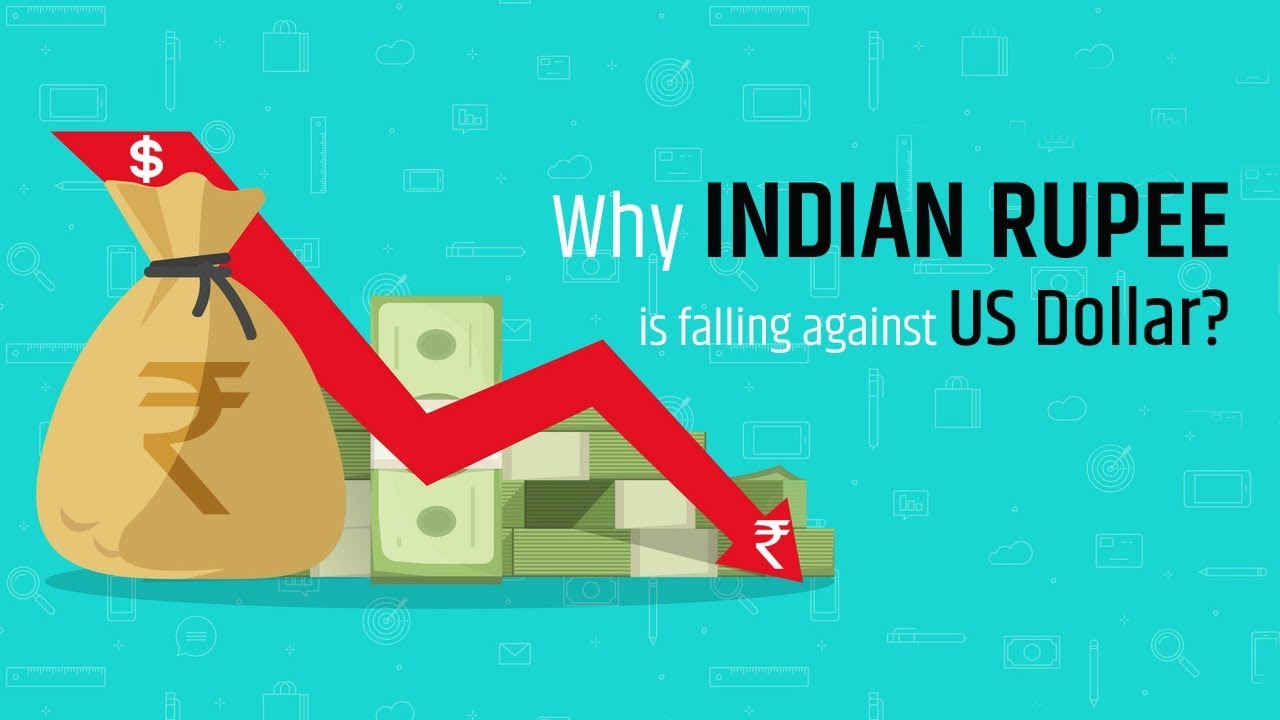Why rupee is falling against dollar, How does it affect you?
Why rupee is falling against dollar?
In ancient times, before the advent of currency, there was no concept of money. People traded goods and services for one another using a barter system. A person might give someone a basket of bananas in exchange for a bag of rice or a person might offer his services in return for a cow. Eventually, people began to use cows as a medium of exchange. Cows had a stable value because they were easy to count. But eventually, people realized that cows weren’t very useful as a medium of exchange, so they switched to metals such as copper and silver. These metals were easier to measure and store than cows. However, these metals also had problems. Copper and silver were both soft and easily tarnished. Then came representative money. Its value was decided based on the ability to purchase certain physical commodities. You know, like gold, each country’s currency was tied to a fixed amount of gold but the gold standard has its drawbacks like you couldn’t have a new supply of money without a new supply of gold.
This problem became evident during the world wars so in 1971 the world banned representative money instead Fiat Money was adopted. Fiat Money is what we still use today. Today our bank notes don’t have an intrinsic value and they are not backed by commodities either, instead the value varies depending on demand and supply. Now demand and supply is influenced by a number of factors.
Following factors decides the demand & supply of a currency
- Interest Rates
- Inflation
- Capital Flow
- Supply of Money
Since independence the rupee has depreciated almost 20 times. In 1948, 1$ was available at 4 INR and there was no debt in the country. When the First 5 year plan was implemented in 1951 the government started taking loans from abroad and then the value of the rupee also started depreciating. The US dollar enjoys the status of the global currency which is why the value of rupee is pegged against the dollar and it shows the Indian currency is strong or weak.
Now the rupee’s historic plunge, breaches more than 80 against the dollar. Let’s find out the reasons for Rupees falling against the dollar.
What are the Main Reasons Behind the Fall of the Indian Rupee?
- Trade Deficit
Trade deficit occurs when a country’s imports (goods & services) are higher than its exports. In simple terms we spend more than we earn. In 2022, India had a total export of 275,488,744.93 USD and total imports of 367,980,363.48 USD leading to a negative trade balance of -92,491,618.55 USD. It makes the demand for dollars much higher than supply. While the supply of US dollars falls, the demand to pay for trade in US dollars remains. That disparity results in the rise in the exchange rates and this makes the rupee weaker against the dollar.
- Hikes in Interest Rate
The US is raising interest rates because of inflation at home and to keep the value of their currency from falling. The Federal Bank has increased the interest rate from 3.75% to 4% this the sixth rate hike this year, and it seems like the rest of the world is starting to feel the effects and it is expected to peak at 4.5% to 4.75% in 2023. Whenever a country hikes its interest rates investors rush to invest to get assured returns. The US has hiked its interest rates so investors have withdrawn their money from other countries including India to invest in the US capital market in order to get more returns and stable currencies are more attractive for investors.
So far, in 2022, FIIs(Foreign Institutional Investors) have removed $561.046 billion from the Indian markets. When investments are pulled off it leads to currency crunch. This has pushed the value of the dollar and this makes the rupee depreciate against the dollar.
- Global Commodity Price Increase
One of the main reasons for global commodity price increase is the Eastern Europe countries war. Due to the war the energy prices & Oil prices across the world have gone up. And that eventually leads to inflation and rising costs for everyone. For example when oil prices go up all modes of transportation charges go up, once transportation charges are increased the overall cost of raw materials also goes up.
India is an import dependent nation. We import Oil, gas, electrical machinery, computers, metals, plastics and fertilizers etc. More import payments need to be paid in dollars. So dependency on dollars for trade is evident that’s the reason demand for dollars has strengthened.
India is spending more dollars to buy Oil. Crude oil prices play an important role in the value of the Indian rupee. When crude oil prices go up, it increases the cost of goods and services and your import prices become more expensive. You have to spend more for the same amount of commodities. This makes the rupee weaker against the dollar.
- Inflation
Rising inflation rate across the globe is a cause of concern including in India as price hike over time reduces the purchasing power of consumers. India’s retail inflation moved higher to 7% in August 2022. Inflation is a rise in costs due to an increase in either demand or supply. A fall in the value of the rupees leads to a rise in import costs, which are passed onto consumers.
Rising crude oil prices are pushing inflation in India higher. A stronger dollar makes Indian exports cheaper across overseas and imports costlier, making it harder to compete.
- Exchange Rate
Exchange rates that determine how much forex you can buy against your local currency.
The value of the Indian rupee against foreign currencies fluctuates based on many factors. One factor that influences the value of the rupee is the exchange rates of different countries. For example, if the value of the dollar increases, it becomes costlier to import goods from abroad. This makes the rupee weaker against the dollar. On the other hand, if the value of a dollar decreases, it becomes cheaper to buy goods from overseas. This makes the rupee stronger against the dollar.
How will the changing value of your currency affect you?
- Foreign Travel
If you live in India and you are traveling to the US on vacation. The exchange rate between the Indian rupee and the US dollar will determine how much money you need to fund your trip.
- Cost of Imports
When the value of the dollar goes up, your imports become more expensive. You have to spend more for the same amount of commodities.
- Studying in abroad
If you’re studying abroad, most likely your parents will be sending you money every month. Due to fluctuation in exchange rates your parents will end up spending more money in local currency in order to send the same amount of foreign currency in upcoming months.
Meet Rajesh

I am Rajesh from India, the founder and owner of byrajesh.com
Currently I am working as an Automation Test Analyst in an MNC Company, while working in a comfortable position I always think of my future and next move.

COPYRIGHT ©2022, BY byrajesh. ALL RIGHTS RESERVED.


